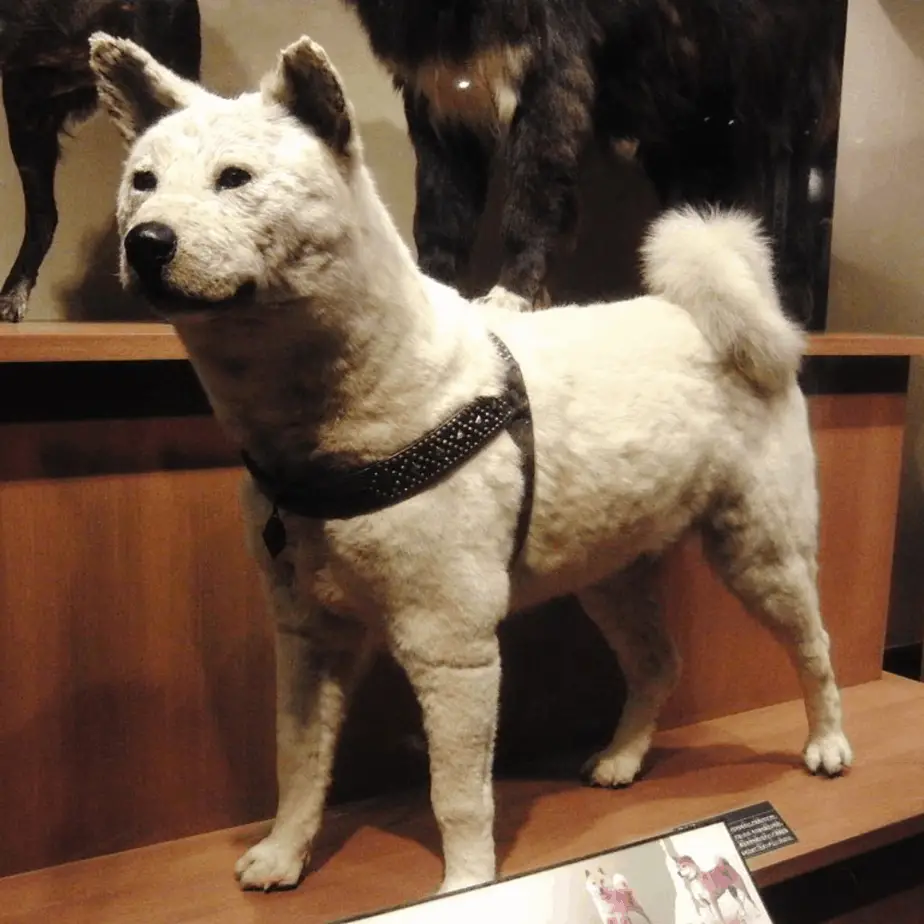Many heartwarming stories help people understand the different outstanding characteristics of various canine breeds. We’ll be talking about a dog named Hachi, but what kind of dog was Hachi?
Hachi was an Akita Inu that lived in Japan. He was born on November 10th, 1923, and passed away on March 8th, 1935, living to be over 12 years old. This particular Akita had a peach white coat, roughly recognizable in a photo that surfaced back in 2015- though it’s in black and white.
We’ll be brushing up on the Akita breed that enjoys the fame Hachiko left on its shoulders. But first, let’s look at what made Hachiko a staple in Japanese culture.
The Hachi Story
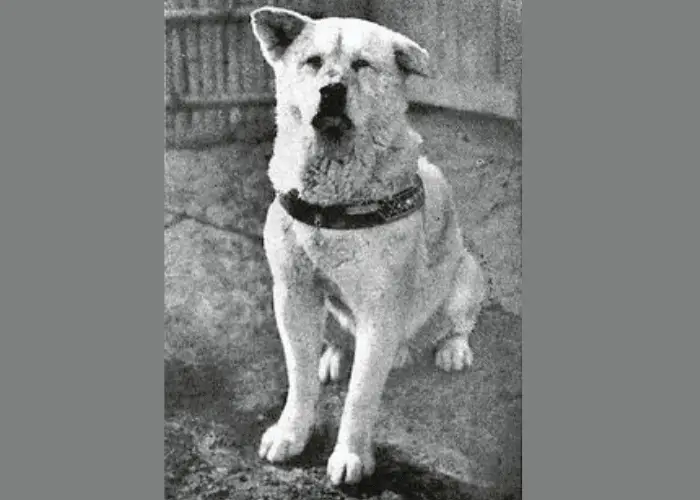
Born on a farm in 1923, Hachi or Hachiko was adopted by a professor of agriculture at the University of Tokyo.
Over time as the Akita Inu puppy grew, the owner, Hidesaburo Ueno, developed a daily pattern or ritual together that lasted several years.
The two would walk together down to the Shibuya train station, where Hidesaburo would affectionately say his goodbyes to Hachiko, get on the train, and leave en route to the University.
Hachiko would then lounge around the train station for several hours until his owner returned from work.
For years this pattern between Hidesaburo and his dog took place. The station employees grew fond of Hachiko and would take care of him since he became such a fixture at the station.
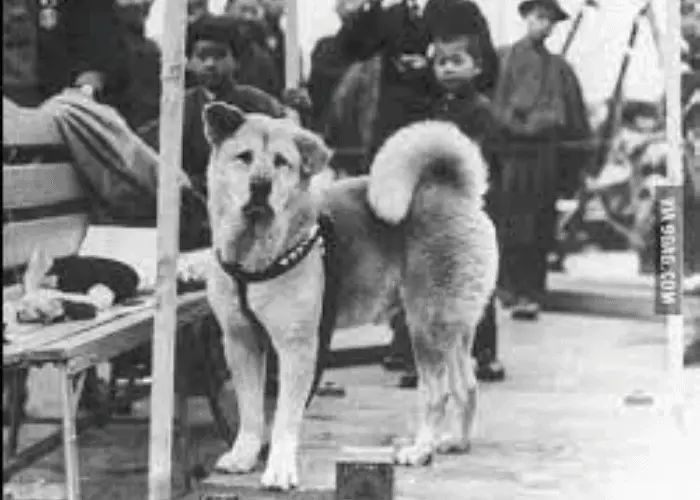
One day everything changed for Hachiko, as his beloved owner never came back from work, as he suffered a brain hemorrhage and passed away before having the chance to come home.
Not being aware his owner’s passing, Hachiko vigilantly awaited his owner for over nine years afterward, right up until the day of his death in March of 1935.
It is said that Hachi died of natural causes. His loyalty and longsuffering for the return of his loved one pierced the hearts of the Japanese people, and the fame of this dog became the stuff of legends.
Because of how much this dog impacted the community, his remains were stuffed and displayed at the Museum of Japan in Tokyo. Several pictures have since been released of Hachiko by the family.
Hachi: A Dog’s Tale Movie
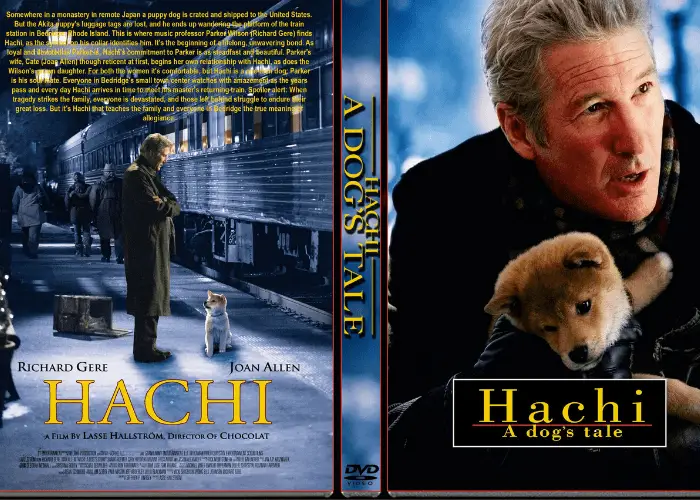
In 2009, this story was transformed into a movie called Hachi: A Dog’s Tale.
The film is based on the true story of Hachi, and because of that, some have warned that it is not a happy film in the least but is rather depressing and heartbreaking.
When you understand the story behind the movie, it is easy to see why people would want to spare their young children from viewing the film.
That notwithstanding, the film’s focus helps explain the heart, love, affection, and devotion that a dog shares with its owners and the brutal reality of when things change between them without warning.
Notable Markers of Hachiko’s Fame
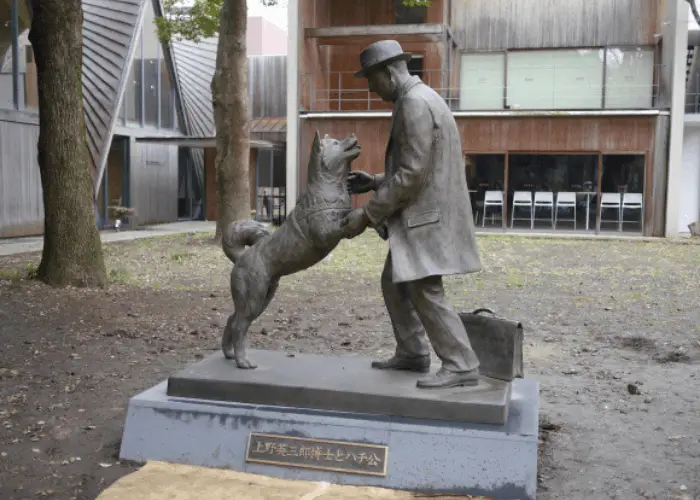
As aforementioned, this relationship hit home with many residents of Japan. So much so that statues and keepsakes have been crafted and put on public display.
The Hachiko Statue- Before and After the War
Before the passing of Hachiko, an artist by the name of Teru Ando sculpted a bronze statue at the Shibuya Train Station of the likeness of Hachi. This statue was erected in 1934.
Unfortunately, World War II efforts required materials, which caused this statue to be recycled for military materials. However, the son of the original artist Takeshi Ando crafted another statue in 1948, which still stands at the station to this day.
Other statues have been erected of Hachi; one in the pup’s hometown and another in front of the Akita Dog Museum. In 2014, a touching statue was erected of Hachi being greeted by Hidesaburo at the University of Tokyo, commemorating the 80th anniversary of Hachiko’s death.
Japanese Akita and the American Akita
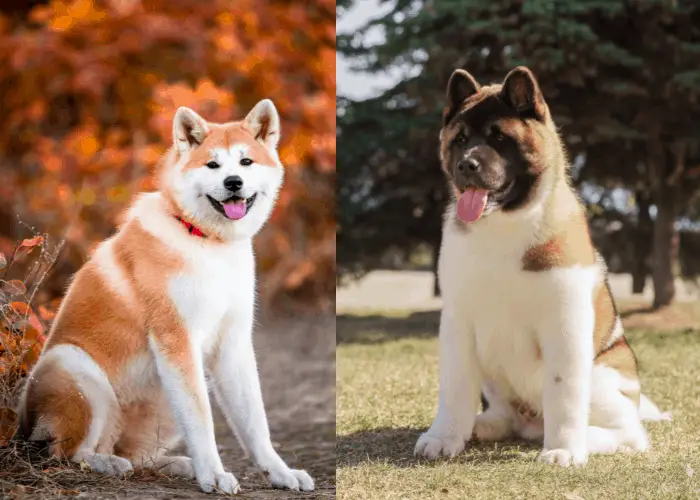
There’s the story, the history, and the memory of Hachiko, the Akita Inu that touched the hearts of so many people. Now, let’s talk a little about the Akita breed.
There are primarily two versions of the Akita dogs that are most popular in Asia and the rest of the world- the Japanese Akita and the American Akita. Though they share the same name, they have slight physical and temperamental variances due to different breeding practices.
Japanese Akita
The Japanese Akita is a bit more petite than its American counterpart. They typically stand up to 25 inches at the shoulder and can weigh up to 120 pounds.
The Japanese Akita Inu has a slightly more streamlined appearance with an almost foxlike head. Keeping with the head theme, their ears are more forward-positioned than the American Akita’s.
American Akita
The American Akita is slightly larger than its Japanese relatives. They most often stand at about 26 inches at the shoulder and often weigh up to 130 pounds.
The head of the American Akita doesn’t resemble a fox like its Japanese cousins but resembles that of a bear. They have a more bulked-up appearance, and their skin rests looser on their frame than the Japanese.
Akita Price in the US

Many people who are up for raising one of these beautiful dogs might get perplexed by the cost of a full-bred Akita Pup.
This is because there’s a huge difference from breeder to breeder, leaving one to question why there is such a variance in price.
Some can go for around $600.00, while others push the $2,000 mark. It’s all in the breed’s bloodline and an owner’s intention with the dog. Some breeders will sell a pup cheaper if you’re willing to sign an agreement to have the dog spayed as soon as it’s physically doable.
This is to prevent future breeding (eliminating any future breeding competition). Or, some breeders offer pups without papers to prevent a new owner from breeding their pup in the future. As is true for all breeds, papers cost money and up the price.
These are just a couple of examples of why pricing may fluctuate, and there are many more. Due diligence is necessary if you’re looking for the best pup at the best price.
Also, make sure that an Akita Inu is the right dog for you before making such a purchase!
Final Thoughts
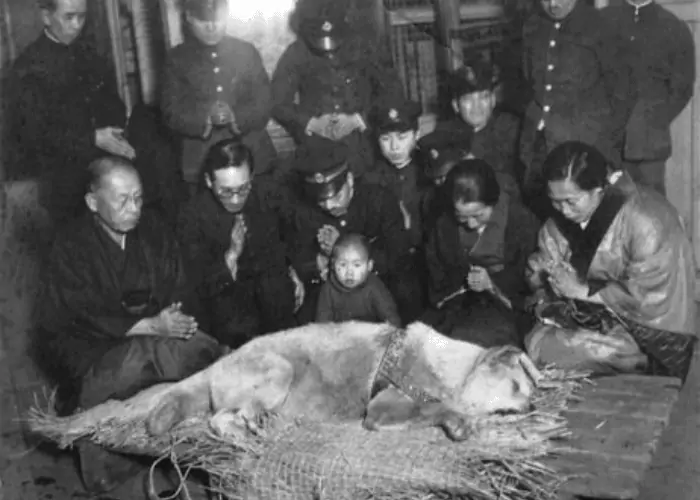
The story of Hachi creates a flux of emotion. Everything from depressing to admirable, especially for those of us who have had incredibly loyal dogs that have passed away, hits home.
All that aside, the story of Hachi shows us that this breed has a side to fall in love with, a remarkable testament to the breed’s steadfast loyalty to their loved ones.
It is not just a testament to the breed itself but a canine staple that thousands of people have celebrated in memory of this single dog.

